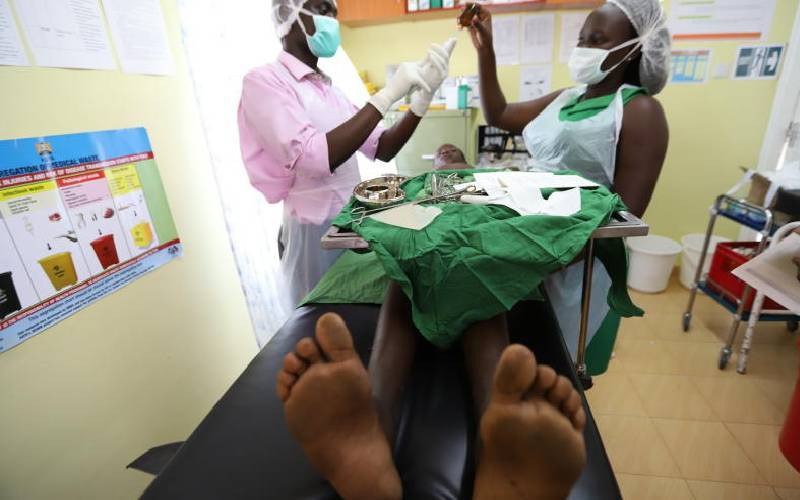There are twice as many women living with HIV compared to men, a report has revealed.
The report also shows that HIV prevalence in women aged between 20 and 34 is nearly three times more compared to men in a similar age bracket.
The grim numbers are contained in the recently released 2018 Kenya Population-Based HIV Impact Assessment report by the National Aids and STI Control Programme.
According to the report, HIV prevalence in the general population stands at 6.6 per cent in women and 3.1 per cent in males.
But when the numbers are broken down into the 20-24 age group, the prevalence is five times in the female population at 3.4 per cent compared to 0.6 per cent in males.
This is while the general prevalence stands at 2 per cent for this age group.
National Aids Control Council chief executive Nduku Kilonzo says these different numbers can be explained by several factors, with a major one being the health-seeking behaviours of the two genders.
“Ideally, we have a higher number of women compared to men who are being tested. Additionally, women, especially those at a sexually active age and in school, are more at risk of getting infected due to having sex with older men. It is not a case of either or, but a collection of all these reasons,” said Dr Kilonzo.
Between the ages of 25 and 29, the prevalence is 6 per cent in the female population and 2.2 per cent in males. The general prevalence for this age group stands at 4.2 per cent.
The same scenario plays out in the 30 to 34 age group where the prevalence among females stands at 9.5 per cent while the general prevalence is 6.5 per cent.
Even with advancing age, the number of women with HIV remains high. For example, between the ages of 35 and 39, prevalence in females stands at 8.7 per cent compared to 4.3 in men.
Between ages 40-44, the prevalence is 11.9 per cent against 6.3 per cent, while in ages 45-49 it is at 10.6 per cent against 8.3 per cent.
It is only in the older age group of between 60-64 that the prevalence rates drop, with women at 6.2 per cent while men are at 5.6 per cent.
Jessica Justman, the principal investigator of the survey, said this scenario is not unique to Kenya.
“We see it in other regions from time to time. It is a reflection of biological as well as cultural set-ups among the populations,” said Dr Justman.
Stay informed. Subscribe to our newsletter
She said one limitation of the survey is that it “does not explain why but is out to tell what happened”.
James Kamau from the Kenya Treatment Access Movement said one of the challenges with men is that they assume their HIV status and do not bother to get tested.
“Women go to ante-natal clinics but men don’t. So when their partners test negative, the men assume that is also their status,” said Mr Kamau.
 The Standard Group Plc is a
multi-media organization with investments in media platforms spanning newspaper
print operations, television, radio broadcasting, digital and online services. The
Standard Group is recognized as a leading multi-media house in Kenya with a key
influence in matters of national and international interest.
The Standard Group Plc is a
multi-media organization with investments in media platforms spanning newspaper
print operations, television, radio broadcasting, digital and online services. The
Standard Group is recognized as a leading multi-media house in Kenya with a key
influence in matters of national and international interest.
 The Standard Group Plc is a
multi-media organization with investments in media platforms spanning newspaper
print operations, television, radio broadcasting, digital and online services. The
Standard Group is recognized as a leading multi-media house in Kenya with a key
influence in matters of national and international interest.
The Standard Group Plc is a
multi-media organization with investments in media platforms spanning newspaper
print operations, television, radio broadcasting, digital and online services. The
Standard Group is recognized as a leading multi-media house in Kenya with a key
influence in matters of national and international interest.









